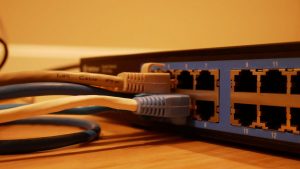7 Tips for Securing Your Home Network

Image from Unsplash.com
If you think that your home network is too small and insignificant to become a target of a cyberattack, you’re wrong. With a new cyberattack hitting users across the globe every 39 seconds, you’re much more likely to become a victim. Hence, we came up with a few pieces of advice to help you develop a resilient security framework that can be easily upgraded according to your specific needs.
CYBERSECURITY RISKS FOR YOUR HOME NETWORK
If you want to secure your network and devices properly, you should start by assessing the potential weak points of your security plan. That being said, in most households, the weakest link of a network security strategy tends to be a compromised router. Through a rogue router, malicious third parties can gain immediate access not only to your computer or phone but also to your other home devices like baby monitors, smart locks, and others. Once they gain access to your devices, they can stay unnoticed and harvest your valuable data to eventually use it to commit various frauds and malicious activities in your name. Furthermore, these kinds of attacks on home networks started to be even more frequent during the pandemic since we spent much more time in our homes, where we’ve switched a portion of our work-related activities into the household.
Another threat home networks commonly face are various malware and spyware that can infect our devices and cause absolute havoc. You should be especially careful if you have kids accessing your devices since kids tend to be a common target on hackers’ radar.
7 WAYS TO SECURE YOUR HOME NETWORK
1. Use a strong password to secure your router
Routers usually come with pre-set passwords that hackers can easily guess. Thus, change the password as soon as you get your router and make sure to create a password that’s at least 12 characters long, includes a combination of symbols, numbers, and lower and upper case letters. Also, keep in mind that passwords containing personal information like names, dates, and pet names tend to be the easiest ones to break.
2. Install a VPN for the router
Having a VPN on your router is an excellent way to protect all your online activities in one swing. A VPN protects network activities by encrypting data in traffic, and it hides your IP address so that cybercriminals can’t know what you’re doing online and what’s your actual location. Aside from securing your network, a VPN will grant you more privacy and freedom while you’re browsing the internet.
3. Activate a network encryption
If you’re looking for a way to secure your network even further, check your router and turn on the encryption feature. The most resilient encryption protocol safeguarding your WiFi network tends to be WPA2-AES. Try to avoid older protocols like WAP, TKIP, and WPA since they’re less resilient to brute force attacks than WPA2. This way, you won’t have to worry about eavesdroppers because all the data they come across will be encrypted.
4. Update firmware regularly
Every router comes with a preinstalled software called firmware responsible for controlling routing protocols, protective mechanisms, and other features. Firmware is crucial for the proper functioning of your router, and for that reason, it should be regularly updated. Software updates can add new features, fix bugs, and protect your system from potential vulnerabilities.
5. Open a guest network for visitors
There is an expression stating that the best way to find out if you can trust someone is to simply trust them. Well, that could be your rule of thumb for anything except your network credentials. Thus, consider creating a guest network if you often have friends coming over and asking for your WiFi password. This way, you won’t come off as arrogant, and you’ll still have control over your network credentials.
6. Disable the remote management feature on your router
Nowadays, most routers have a remote management feature to configure settings from any location via the internet. Check out and disable remote management because otherwise, you can face significant risk by exposing your network to unauthorized individuals trying to put their eyes on your sensitive data.
7. Turn off the network when you’re not using it
Switching your WiFi network on and off can be tiring, but if you’re going on a trip or you’re planning to be absent for some more extended period, disabling a network is a good practice. This way, you can prevent hackers from potentially exploiting your network. Also, some routers have the option of scheduling an automatic disabling at specific times.
The previous year was a reminder of how crucial it is to feel safe and well protected. Thus, if you haven’t already, think about upgrading your home network security as well. Go through your priorities and decide what to focus on since there’s no universal recipe for creating a successful security framework. Everyone’s preferences and needs are different, and if you don’t know where to start, don’t hesitate to ask for expert advice.
